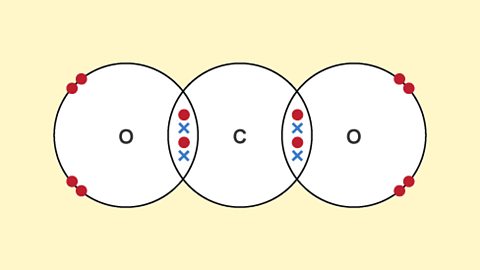What are the key learning points about acids, bases and salts?
Indicators are chemicals that can change colour to identify acidic, alkaline and neutral solutions. Universal indicator can determine the strength of an acidic or alkaline solution.
Acids and alkalis can be strong or weak depending on how much they ioniseTo ionise is to convert an uncharged atom into a charged particle by adding or removing electrons. in water.
Acids can react with metals, metal carbonates, metal hydrogencarbonates, bases (metal oxides/hydroxides) and ammonia.
Practical methods can be used to prepare pure salts from acids.
What is an indicator?
An indicator is a chemical that changes colour in acidicWhen an acid is dissolved in water it makes an acidic solution., alkalineWhen a base dissolves in water it is an alkali and makes an alkaline solution which has a pH higher than 7. and neutralIf a solution is neither acidic nor alkaline it is neutral. Neutral solutions have a pH of 7. solutions.
Some common indicators include red litmus paper, blue litmus paper, phenolphthalein, and methyl orange.
| Indicator | Acidic solution | Neutral solution | Alkaline solution |
|---|---|---|---|
| Red litmus paper | red | red | blue |
| Blue litmus paper | red | blue | blue |
| Phenolphthalein | colourless | colourless | pink |
| Methyl orange | red | orange | yellow |
These indicators allow you to easily work out if a substance is an acidCorrosive substance which has a pH lower than 7. Acidity is caused by a high concentration of hydrogen ions. or an alkaliA base which is soluble in water. A base is a substance which neutralises an acid. .
However, none of these indicators tell you about the strength of an acid or alkali.
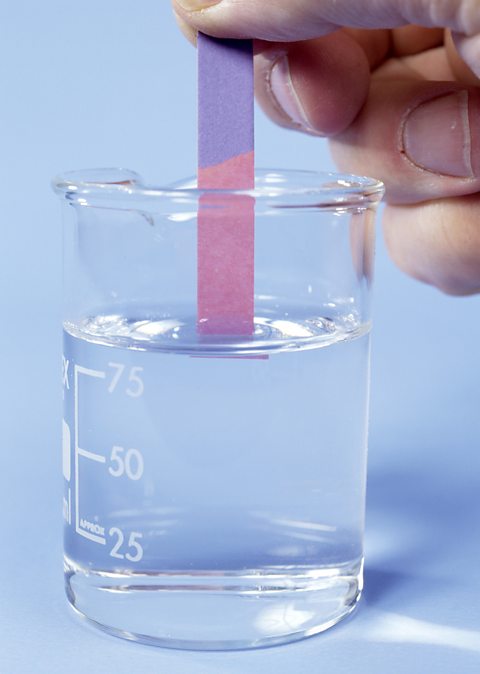
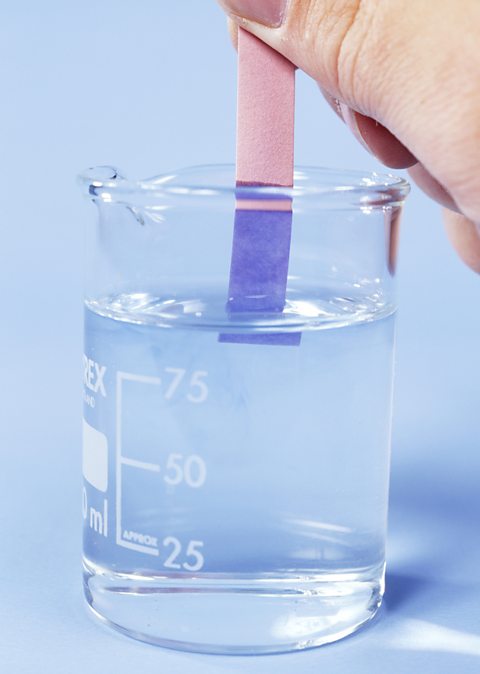
What is the pH scale?
The pH scale gives a measure of the strength of an acidic or alkaline solution.
The range for the pH scale is 0 (strong acid) to 14 (strong alkali).
- pH 0 – 2: strong acid
- pH 3 – 6: weak acid
- pH 7: neutral
- pH 8 – 11: weak alkali
- pH 12 – 14: strong alkali
Universal indicator solution or paper turns a range of colours, depending on the strength of the acid or alkali.
The most accurate method of measuring the pHScale of acidity or alkalinity. A pH (power of hydrogen) value below 7 is acidic, a pH value above 7 is alkaline. Neutral solutions have a pH of 7. of a solution is by using a pH meter.
This an electronic device that can measure the pH of a solution to at least one decimal place.
What are acids, alkalis and bases?
An acid is a substance that dissolves in water to produce hydrogen ionElectrically charged particle, formed when an atom gains or loses electrons., H+(aq).
The higher the concentration of hydrogen ions in the solution, the lower the pH. (Higher tier only).
An alkali is a substance that dissolves in water to produce hydroxide ions, OH-(aq).
What are strong and weak acids/alkalis?? (Higher tier only)
The difference between strong and weak acids is how much they are able to ionise in water.
Ionising involves the acid molecule splitting apart to form separate ions (one of which is an H+ ion).
Strong acids completely ionise in water.
They break up completely to produce a high concentration of hydrogen ions in the solution.
For example, hydrochloric acid ionises completely into hydrogen ions and chloride ions:
HCl(aq) → H+(aq) + Cl-(aq)
Strong acids include:
- hydrochloric acid (HCl)
- sulfuric acid (H2SO4)
- nitric acid (HNO3)
Weak acids only partially ionise in water.
Only a small fraction of their molecules break into hydrogen ions when added to water.
For example, ethanoic acid (CH3COOH) is a weak acid, it only partially ionises in water.
CH3COOH(aq) ⇌ H+(aq) + CH3COO-(aq)
The ‘reversible arrow’ (⇌) indicates a reversible reaction.
What are the strong and what are the weak alkalis? (Higher tier only)
Strong alkalis completely ionise in water.
They break up completely to produce a high concentration of hydroxide ions in the solution.
For example, sodium hydroxide ionises completely into sodium ions and hydroxide ions:
NaOH(aq) → Na+(aq) + OH-(aq)
Strong alkalis include:
- sodium hydroxide (NaOH)
- potassium hydroxide (KOH)
Weak alkalis only partially ionise in water.
Only a small fraction of their molecules break into hydroxide ions when added to water.
For example, ammonia (NH3) is a weak alkali, it only partially ionises in water.
NH3(aq) + H2O(l) ⇌ NH4+ (aq) + OH-(aq)
The ‘reversible arrow’ (⇌) indicates a reversible reaction.
What is the difference between an alkali and a base?
A base is a metal oxide or metal hydroxide that neutralises an acid to produce a salt and water.
An alkali is a solubleA solid is soluble if it can dissolve into a specific solvent. For example, salt and sugar are both soluble in water. base.
For example, sodium hydroxide and potassium hydroxide both neutralise acids so they are bases.
They both also dissolve in water, so can be described as alkalis as well.
What is the difference between dilute and concentrated solutions? (Higher tier only)
Concentration is a measurement of the amount of an acid or alkali that has been dissolved in a solution. It is measured in mol/dm3 (moles per decimetre cubed).
- A concentrated acid/alkali contains a large number of acid/alkali particles dissolved per unit volume.
- A dilute acid/alkali contains a small number of acid/alkali particles dissolved per unit volume.
Question
Two solutions of hydrochloric acid (HCl) were made, and the pHScale of acidity or alkalinity. A pH (power of hydrogen) value below 7 is acidic, a pH value above 7 is alkaline. Neutral solutions have a pH of 7. of both solutions was tested:
| Solution | pH |
|---|---|
| HCl solution A | 1 |
| HCl solution B | 3 |
Explain why the two solutions of HCl have different pH values.
Answer
HCl is a strong acid, so you may expect it to always have a low pH value. However, pH is also affected by the concentrationThe amount of a substance that has been dissolved in a certain amount of solution. Measured in mol/dm3 (moles per decimetre cubed). of the solution.
HCl solution A is a more concentrated solution, as its pH is lower (large number of acid particles dissolved per unit volume).
HCl solution B is a more dilute solution, as its pH is higher (smaller number of acid particles dissolved per unit volume).
What is a neutralisation reaction?
A neutralisation reaction is a reaction between an acid and a base producing a salt and water.
In this reaction, the hydrogen ions in an acid and the hydroxide ions in an alkali join together to make water.
The ionic equation for neutralisation is (higher tier):
H+(aq) + OH-(aq) → H2O(l)
Neutralisation is an exothermic reaction – one in which heat is given out.
The maximum temperature is reached when the acid solution is completely neutralised by the alkali.
Prescribed practical C2: Investigate the reactions of acids
Please use the link below to access the article on: Prescribed practical (C2) - Investigate the reactions of acids
What happens when an acid causes a reaction?
How to work out the name of the salt produced during a reaction
When an acid reacts it is converted into a salt.
You need to be able to work out the name (and formula) of a salt produced in a reaction.
Salts are ionic compoundAn ionic compound occurs when a negative ion (an atom that has gained an electron) joins with a positive ion (an atom that has lost an electron). composed of two parts.
The first word in a salt name is always the name of the metal in the equation.
The second word in a salt name comes from the acid in the equation:
| Acid name | Salt name |
|---|---|
| Hydrochloric acid | Chloride |
| Sulfuric acid | Sulfate |
| Nitric acid | Nitrate |
For example, the salt produced in the reaction of sodium hydroxide with hydrochloric acid is sodium chloride.
Reaction observations
Some general observations can be made during acid reactions:
- if a gas is produced, the observations are ‘bubbles’ or ‘fizzing’.
- if a solid such as a solid metal, base, carbonate or hydrogencarbonate reacts with the acid then the observation is ‘solid disappears and a solution is produced’.
- most acid reactions are exothermic – the observation is ‘heat released’. Exceptions – copper(II) oxide and sodium hydrogencarbonate with acid are both endothermicA physical change or chemical reaction that absorbs energy from the surroundings. reactions.
It is useful to know the colour of some compoundA substance formed when two or more elements are chemically combined. commonly reacted with acids to work out if a colour change has occurred.
| Substance | Colour |
|---|---|
| copper(II) oxide | black solid |
| copper(II) carbonate | green solid |
| hydrated copper(II) sulfate | blue crystals |
| copper(II) salts in solution | blue solution |
| iron(II) salts in solution | green solution |
| Group 1, Group 2, aluminium and zinc compounds | white solids – if they dissolve in water give colourless solutions |
How do acids react with metals?
Acids react with metals to produce a salt and hydrogen.
acid + metal → salt + hydrogen
Example:
hydrochloric acid + magnesium → magnesium chloride + hydrogen
2HCl(aq) + Mg(s) → MgCl2(aq) + H2(g)
Observations: grey solid magnesium disappears, colourless solution produced, heat released, bubbles.
The hydrogen in these reactions can be tested. The test for hydrogen is:
- apply a lighted splint
- a popping sound results
How do acids react with bases?
Acids react with bases to form a salt and water.
acid + base → salt + water
Example
sulfuric acid + copper(II) oxide → copper(II) sulfate + water
H2SO4(aq) + CuO(s) → CuSO4(aq) + H2O(l)
Observations: black solid copper(II) oxide disappears, blue solution produced.
How do acids react with carbonates and hydrogencarbonates?
Acids react with metal carbonates and metal hydrogencarbonates in the same way.
These reactions produce a salt, water and carbon dioxide.
acid + metal carbonate → salt + water + carbon dioxide
or
acid + metal hydrogencarbonate → salt + water + carbon dioxide
Example - carbonate
hydrochloric acid + copper(II) carbonate → copper(II) chloride + water + carbon dioxide
2HCl(aq) + CuCO3(s) → CuCl2(aq) + H2O(l) + CO2(g)
Observations: green solid copper(II) carbonate disappears, blue solution produced, heat released, bubbles.
Example - hydrogencarbonate
hydrochloric acid + sodium hydrogencarbonate → sodium chloride + water + carbon dioxide
HCl(aq) + NaHCO3 (s) → NaCl(aq) + H2O(l) + CO2(g)
Observations: white solid sodium hydrogencarbonate disappears, colourless solution produced, bubbles.
The carbon dioxide gas produced in these reactions can be tested. The test for carbon dioxide is:
- bubble gas into colourless limewater (calcium hydroxide solution)
- the solution will change from colourless to milky if the gas is carbon dioxide
How do acids react with ammonia?
Acids react with ammonia to form a salt. There is only one product in this reaction.
acid + ammonia → ammonium salt
Example
sulfuric acid + ammonia → ammonium sulfate
H2SO4(aq) + 2NH3(g) → (NH4)2SO4(aq)
Question
For the following acid reactions, write word equations and predict the observations:
| Reaction | Reactants |
|---|---|
| 1 | Zinc and nitric acid |
| 2 | Sodium oxide and sulfuric acid |
| 3 | Calcium carbonate and hydrochloric acid |
Answer
- Zinc and nitric acid
| Word equation | zinc + nitric acid → zinc nitrate + hydrogen |
| Observations | Grey solid disappears, colourless solution formed, fizzing, heat released. |
- Sodium oxide and sulfuric acid
| Word equation | sodium oxide + sulfuric acid → sodium sulfate + water |
| Observations | White solid disappears, colourless solution formed, heat released. |
- Calcium carbonate and hydrochloric acid
| Word equation | calcium carbonate + hydrochloric acid → calcium chloride + carbon dioxide + water |
| Observations | White solid disappears, colourless solution formed, fizzing heat released. |
What are salts?
A salt is a compound formed when some or all the hydrogen ionElectrically charged particle, formed when an atom gains or loses electrons. in an acid are replaced by metal ions or ammonium ions.
For example, zinc sulfate is the salt formed when zinc ions replace the hydrogen ions of sulfuric acid.
Most Group 1 (I), Group 2 (II), aluminium and zinc salts are white.
They produce colourless solutions when dissolved in water.
Transition metal salts generally produce coloured solutions when dissolved in water.
How to prepare soluble salts
A pure, dry sample of a soluble salt can be prepared in two ways.
Method one – adding an insoluble solid such as a base/metal carbonate to an acid
In this method, an excess of the insoluble solid is added to the acid.
This ensures that all of the acid is converted to salt.
The leftover solid can be removed by filtration.
- add excess insoluble substance (e.g. base) to warm acid
- filter off excess solid
- evaporate filtrate to half volume
- cool to allow crystals to form
- filter off the crystals
Method 1 is used for most Group 2, aluminium and transition metal salts.
Method two – adding an alkaline solution to an acid
In this method, an indicator is used to ensure that the acid and alkali are mixed in the correct quantities to neutralise each other, so that only a salt remains in the solution.
- add alkali to acid, or vice versa, in the presence of an indicator until the indicator changes colour to show a neutral solution.
- repeat the process without the indicator, or remove the indicator using charcoal
- evaporate the solution to half volume
- cool to allow crystals to form
- filter off the crystals
You can dry the crystals by placing it in a desiccator, in a low temperature oven, or between two sheets of filter paper.
Method 2 is used for sodium, potassium and ammonium salts.
Prescribed Practical C3 - Investigate the preparation of soluble salts
Please use the link below to access the article on: Prescribed practical (C3) - Investigate the preparation of soluble salts
How to work with acids and alkalis safely
You should always take care in the laboratory, but strong acids and alkalis are particularly dangerous.
Take care with chemicals carrying international chemical hazard labelling.
How much do you know about acids, bases and salts?
More on Unit 1: Structures, trends, chemical reactions, quantitative chemistry and analysis
Find out more by working through a topic
- count9 of 10
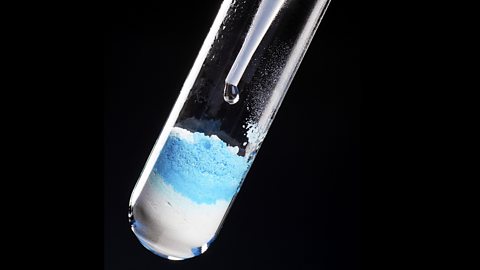
- count10 of 10

- count1 of 10
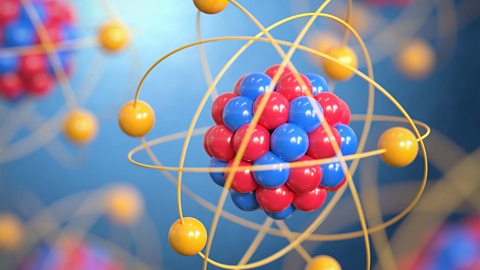
- count2 of 10
